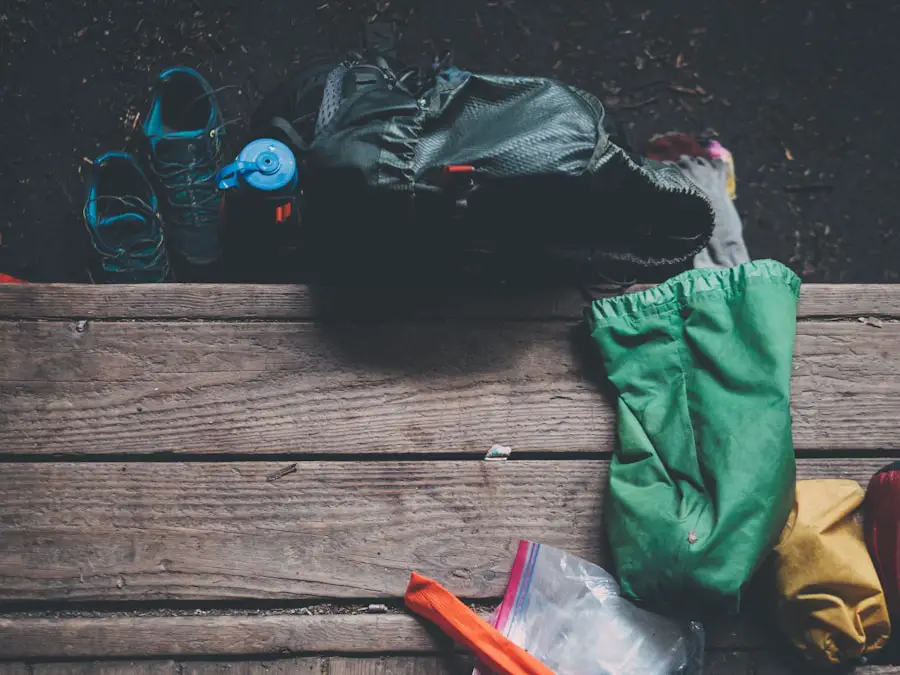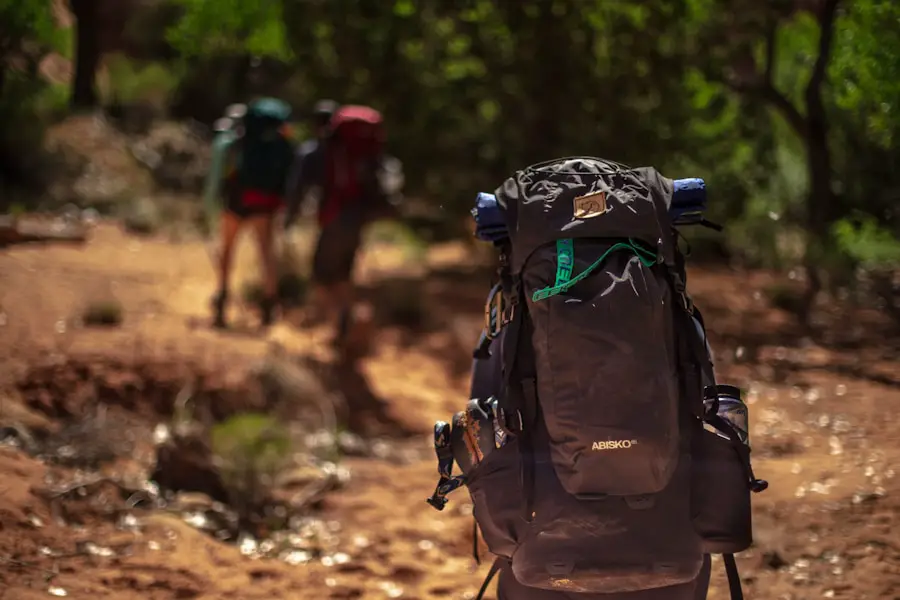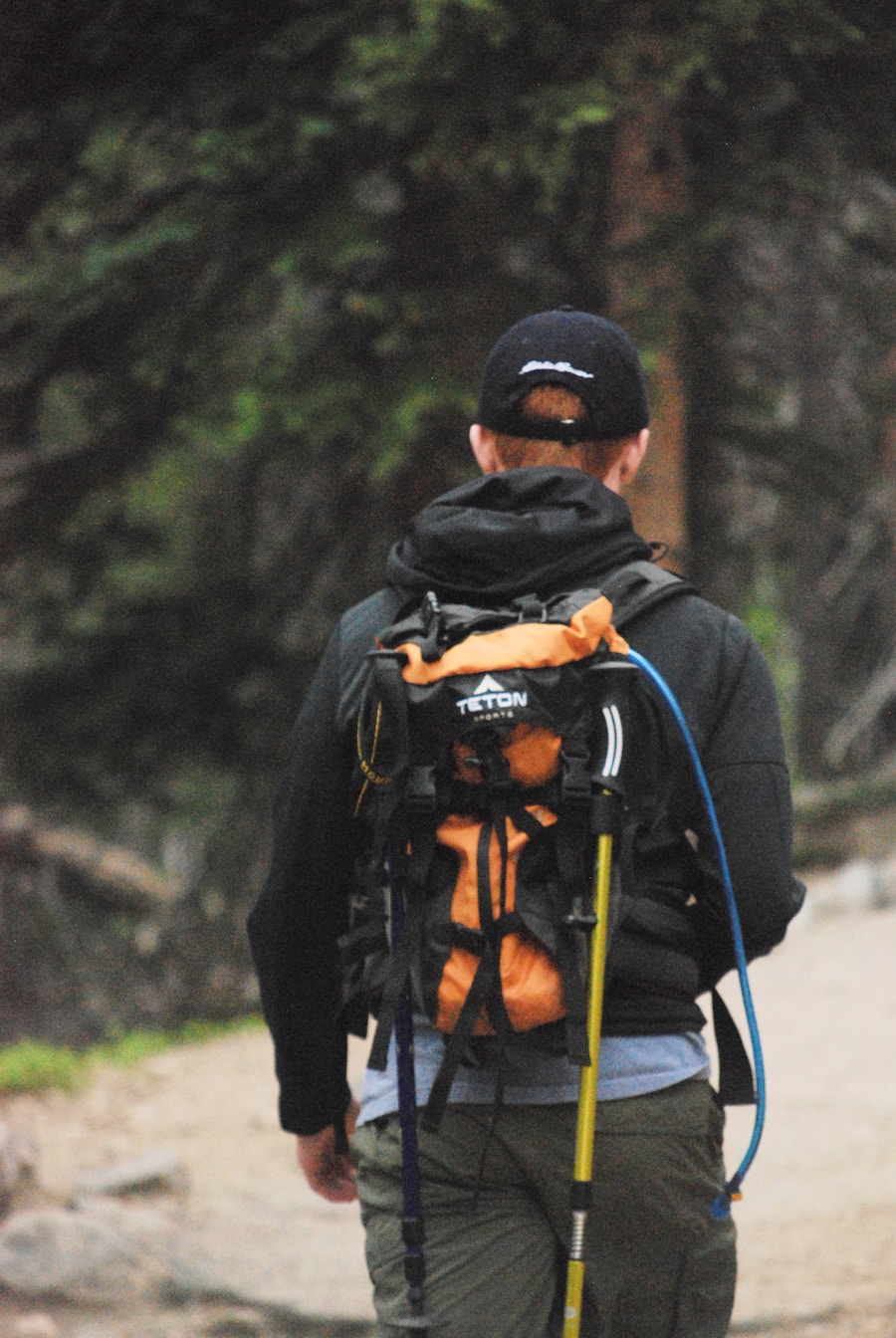Water and food are the cornerstones of survival in any outdoor adventure. The human body can only survive a few days without water, making it the most critical resource to secure. In the wilderness, finding a reliable water source is paramount.
Streams, rivers, and lakes are common sources, but it’s essential to purify any water collected from these natural sources to avoid waterborne illnesses. Boiling water for at least one minute is a reliable method of purification, as it kills most pathogens. Alternatively, water purification tablets or filters can be used, which are lightweight and easy to carry.
Understanding how to locate and treat water can mean the difference between life and death in a survival situation. Food, while not as immediately critical as water, is still vital for maintaining energy levels and overall health during extended periods outdoors. For those venturing into the wild, packing high-calorie, lightweight food items is advisable.
Options such as energy bars, dried fruits, nuts, and jerky provide essential nutrients without adding excessive weight to a backpack. Additionally, learning basic foraging skills can enhance food security in the wild. Identifying edible plants, berries, and nuts can supplement your food supply.
However, caution is necessary; misidentifying plants can lead to serious health risks. Knowledge of local flora and fauna is invaluable for anyone planning to spend time in nature.
Key Takeaways
- Water and food are essential for survival in the wilderness, so always pack enough to last your trip.
- Navigation tools like a map, compass, and GPS can help you find your way if you get lost.
- A first aid kit with bandages, antiseptic, and pain relievers can help treat minor injuries and illnesses.
- Shelter options like a tent, tarp, or emergency blanket can protect you from the elements.
- Clothing should include layers, waterproof gear, and extra socks to stay warm and dry.
- Fire starter tools like matches, a lighter, and fire starter can help you start a fire for warmth and cooking.
- A multi-tool with a knife, whistle, and other tools can be useful for various tasks in the wilderness.
- Personal items like sunscreen, insect repellent, and toilet paper can help keep you comfortable and protected.
Navigation Tools: Map, Compass, and GPS
Navigating through unfamiliar terrain requires reliable tools and skills. A traditional map and compass are fundamental navigation tools that have stood the test of time. A topographic map provides detailed information about the landscape, including elevation changes, water bodies, and trails.
Understanding how to read a map involves recognizing symbols and scales, which can guide you through various terrains. The compass complements the map by providing directional orientation. Knowing how to use a compass involves understanding magnetic declination and how to take bearings, which can help you stay on course even when visibility is poor.
In recent years, GPS technology has revolutionized navigation in the outdoors. Handheld GPS devices and smartphone applications offer precise location tracking and route planning capabilities. However, reliance on electronic devices can be risky; batteries can die, or devices can malfunction in harsh conditions.
Therefore, it’s crucial to have traditional navigation skills as a backup. Combining both methods—using a map and compass alongside GPS—ensures a higher level of preparedness. Practicing navigation skills in familiar areas before venturing into the wilderness can build confidence and competence.
First Aid Kit: Bandages, Antiseptic, and Pain Relievers

A well-stocked first aid kit is an essential component of any outdoor adventure. Accidents can happen at any time, whether it’s a minor cut or a more serious injury. A basic first aid kit should include adhesive bandages in various sizes for covering cuts and abrasions.
Sterile gauze pads and adhesive tape are also important for larger wounds that require more substantial coverage. Antiseptic wipes or solutions are crucial for cleaning wounds to prevent infection. In addition to these items, a pair of tweezers can be invaluable for removing splinters or ticks.
Pain relievers such as ibuprofen or acetaminophen should also be included in your first aid kit. These medications can help alleviate discomfort from headaches, muscle aches, or minor injuries sustained during outdoor activities. It’s also wise to include any personal medications that may be needed during your trip. Familiarizing yourself with basic first aid techniques—such as how to treat burns, sprains, or allergic reactions—can empower you to respond effectively in emergencies.
Taking a first aid course can provide valuable knowledge and skills that could save lives in critical situations.
Shelter: Tent, Tarp, or Emergency Blanket
| Shelter Type | Weight (lbs) | Cost | Waterproof |
|---|---|---|---|
| Tent | 3.5 | 150 | Yes |
| Tarp | 1.2 | 20 | Yes |
| Emergency Blanket | 0.2 | 5 | No |
Creating a safe and comfortable shelter is vital for protection against the elements during outdoor excursions. The choice of shelter often depends on the environment and duration of the trip. A tent offers robust protection from rain, wind, and insects while providing a comfortable sleeping area.
Modern tents come in various designs and materials that cater to different weather conditions and terrains. When selecting a tent, consider factors such as weight, ease of setup, and durability. For those seeking a lighter option or needing temporary shelter, tarps can be an excellent alternative.
Tarps are versatile; they can be used to create makeshift shelters or ground covers. Learning various knot-tying techniques can enhance your ability to set up a tarp effectively in different configurations based on weather conditions. In emergency situations where carrying bulky gear isn’t feasible, an emergency blanket—often made from reflective material—can provide warmth and protection from wind and rain.
These blankets are compact and lightweight, making them easy to include in any survival kit.
Clothing: Layers, Waterproof Gear, and Extra Socks
The right clothing is essential for comfort and safety in outdoor environments. Layering is a fundamental principle of outdoor clothing that allows for adaptability to changing weather conditions. The base layer should wick moisture away from the skin to keep you dry; materials like merino wool or synthetic fabrics are ideal for this purpose.
The middle layer provides insulation; fleece or down jackets are popular choices that trap heat while remaining lightweight. An outer layer is crucial for protection against wind and rain; waterproof jackets with breathable membranes help keep you dry without causing overheating from sweat buildup. Additionally, having extra socks is often overlooked but incredibly important; wet feet can lead to blisters and discomfort during long hikes.
Wool or synthetic socks are preferable as they retain warmth even when damp. Investing in quality footwear that provides support and traction is equally important; hiking boots should fit well and be broken in before embarking on longer treks.
Fire Starter: Matches, Lighter, and Fire Starter

Fire is one of humanity’s oldest tools for survival; it provides warmth, light, and a means to cook food or purify water. Having reliable fire-starting tools is essential for any outdoor adventure. Traditional matches are effective but can be rendered useless if they get wet; therefore, waterproof matches are a wise choice for those venturing into unpredictable weather conditions.
A lighter is another convenient option that provides quick ignition but should be stored safely to prevent accidental activation. In addition to these tools, carrying fire starters—such as magnesium blocks or cotton balls soaked in petroleum jelly—can significantly increase your chances of successfully starting a fire under challenging conditions. These materials ignite easily and burn longer than regular tinder, making them invaluable when trying to start a fire in damp environments or windy conditions.
Understanding how to build a fire using different techniques—such as teepee or log cabin structures—can enhance your ability to create a sustainable flame that will last through the night.
Multi-Tool: Knife, Whistle, and Multi-Tool
A multi-tool is an indispensable item for anyone spending time outdoors; its versatility makes it suitable for various tasks ranging from food preparation to emergency situations. A good multi-tool typically includes several functions such as pliers, screwdrivers, scissors, and various blades—all compactly housed in one device. This eliminates the need to carry multiple tools while ensuring you have what you need at your fingertips.
A knife is perhaps one of the most critical components of any multi-tool; it can be used for cutting rope, preparing food, or even self-defense if necessary. Additionally, including a whistle in your gear can be a lifesaver in emergencies; its sound carries much farther than the human voice and can alert rescuers if you find yourself lost or injured in the wilderness. The combination of these tools not only enhances your ability to perform everyday tasks but also prepares you for unexpected challenges that may arise during your outdoor adventures.
Personal Items: Sunscreen, Insect Repellent, and Toilet Paper
Personal items often play a significant role in ensuring comfort during outdoor activities but are sometimes overlooked in packing lists. Sunscreen is essential for protecting your skin from harmful UV rays while spending extended periods outdoors; even on cloudy days, UV radiation can cause sunburns that lead to discomfort or long-term skin damage. Choosing a broad-spectrum sunscreen with an SPF of at least 30 is advisable; reapplication every two hours is crucial for maintaining protection.
Insect repellent is another vital item that should not be neglected; mosquitoes and ticks can pose serious health risks by transmitting diseases such as Lyme disease or West Nile virus. Repellents containing DEET or picaridin are effective at keeping insects at bay; applying it according to instructions ensures maximum efficacy without compromising safety. Lastly, toilet paper may seem trivial but is essential for hygiene during outdoor excursions; alternatives like biodegradable wipes or trowels for digging cat holes can also be considered based on personal preference and environmental considerations.
In summary, being well-prepared with essential gear not only enhances your outdoor experience but also ensures safety and comfort while navigating the wilderness. Each item plays a specific role in addressing potential challenges that may arise during your adventures in nature.
When preparing for a hiking trip, it’s important to pack all the essentials to ensure a safe and enjoyable experience. One crucial item to consider bringing along is a travel humidor to keep your cigars fresh during your outdoor adventures. For those looking to pack light and efficiently, minimalist travel backpacks are a great option to consider. Check out this article on 5 Must-Have Minimalist Travel Backpacks for Spring Adventures for some great recommendations.
FAQs
What should I put in a hiking pack?
Some essential items to include in a hiking pack are water, food, a map and compass, a first aid kit, a multi-tool, a headlamp or flashlight, extra clothing, and a waterproof jacket.
How much water should I carry in my hiking pack?
It is recommended to carry at least 2 liters of water per person for a day hike. In hot or dry conditions, you may need to carry more.
What type of food is best for a hiking pack?
Pack lightweight, high-energy snacks such as trail mix, energy bars, jerky, and dried fruit. Also, consider bringing a sandwich or other easy-to-eat meal.
Why is a map and compass important to have in a hiking pack?
A map and compass are essential for navigation in case you get lost or the trail is not well-marked. It’s important to know how to use them before heading out on a hike.
What should be included in a first aid kit for a hiking pack?
A hiking first aid kit should include items such as bandages, adhesive tape, gauze pads, antiseptic wipes, blister treatment, pain relievers, and any personal medications.
Why is a multi-tool important for a hiking pack?
A multi-tool can be used for various tasks such as cutting, repairing gear, opening cans, and more. It’s a versatile and compact tool to have on the trail.
Why is extra clothing important to have in a hiking pack?
Weather conditions can change quickly while hiking, so it’s important to have extra clothing such as a warm layer, hat, gloves, and rain gear to stay comfortable and safe.
What type of waterproof jacket should I pack for a hike?
Look for a lightweight, breathable, and packable waterproof jacket that will keep you dry in case of rain or wind. Gore-Tex and other similar materials are popular choices.
